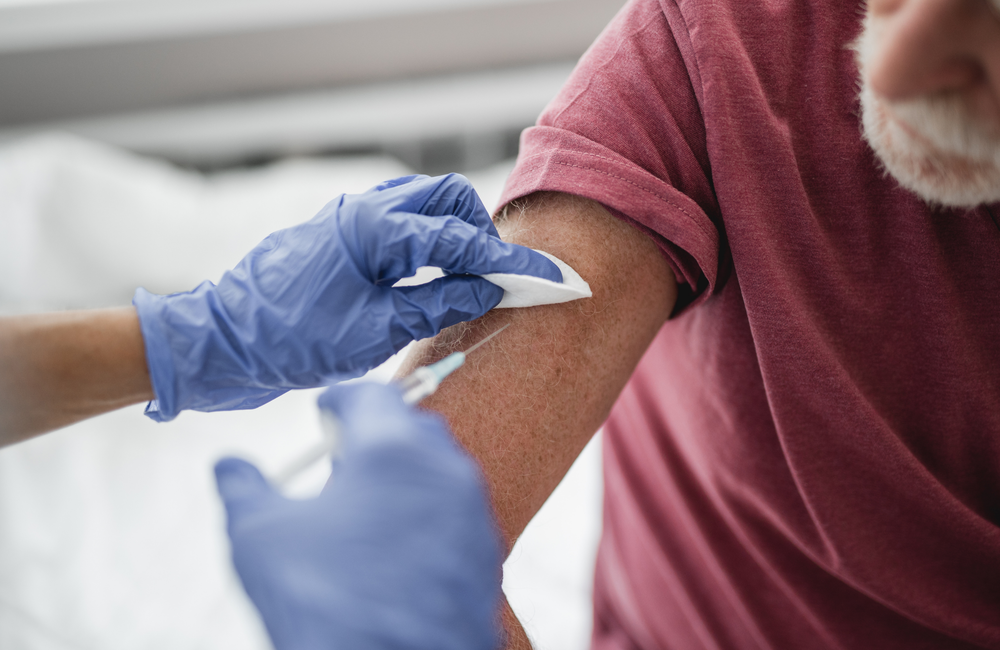
People with HIV with well-controlled viral load on antiretroviral treatment have similar levels of antibodies to HIV-negative people after two doses of a SARS-CoV-2 vaccine and in most cases will not need a third dose, Canadian researchers report.
However, they found that people who received two doses of the Oxford/Astra Zeneca vaccine had lower antibody levels after two doses compared to people who received other vaccines. Antibody levels were also lower in older people and those with multiple underlying health conditions.
The findings, from a study of 100 people with HIV and 152 HIV-negative controls in Vancouver, Canada, have been published as a pre-print article while it undergoes peer review.
Health authorities in several countries, including the United States, have recommended that people with HIV with low CD4 counts should receive a third vaccine dose to improve immune responses to SARS-CoV-2. But there is little information about immune responses to a standard course of SARS-CoV-2 vaccination in people with HIV on which to base recommendations, and few people with HIV were included in clinical trials of the Pfizer or Moderna vaccines.
To understand more about the immune responses to SARS-CoV-2 vaccination in people with HIV, Canadian researchers led by Professor Zabrina Brumme of Simon Fraser University in British Columbia recruited 100 people with HIV through three HIV clinics in Vancouver. The HIV-negative control group included 24 people under 65 years old, 39 people over 65 years old and 89 health care workers already taking part in another study. They took blood samples before vaccination where possible, one month after the first vaccine dose and one month after the second dose.
People with HIV had a median age of 54 years, 88% were male, 69% were White and chronic health conditions were rare among study participants. All people with HIV were taking antiretroviral treatment and had a most recent viral load below 50 copies/ml. The median CD4 count of participants was 710 and the median lowest ever CD4 count was 280.
The HIV-negative control group was predominantly female (67%), less likely to be White (51%) than the HIV-positive group, and more likely to have received either the Pfizer or Moderna mRNA vaccine than people with HIV (97% vs 83%). Eight percent of people with HIV received two doses of the Oxford/AstraZeneca vaccine, while 7% received one dose of the Oxford/AstraZeneca vaccine and one dose of either the Pfizer or Moderna mRNA vaccines.
Use of different vaccines for the first and second dose was common in Canada because a second dose using a mRNA vaccine was recommended for everyone who had received the Oxford/AstraZeneca vaccine after reports of rare thrombotic events associated with it.
The median interval between first and second dose was longer in the control group than for people with HIV (89 days vs 58 days), as early limitations on vaccination supply meant that those vaccinated first – healthcare workers – waited longer for their second dose than those vaccinated later.
Blood samples were tested for total SARS-CoV-2 antibodies as well as the capacity of antibodies to block interaction between the virus and the ACE2 receptor used by the virus to gain entry to cells.
Pre-vaccination blood samples were available for 66% of people with HIV and 97% of controls. They showed that 8% of people with HIV and 10% of the control group had antibodies to SARS-CoV-2 prior to vaccination.
After their first vaccine dose, people with HIV had somewhat lower antibody levels (-0.4 log lower, p=0.0001) but after the second dose, antibody levels in both people with HIV and controls increased by 2 log and the difference in antibody levels between people with HIV and controls diminished to -0.1 log (p=0.04).
Multivariable analysis showed that, after the second dose, HIV was not associated with lower antibody levels. Instead, lower antibody levels were associated with having a larger number of underlying chronic health conditions, or receiving two doses of the Oxford/AstraZeneca vaccine, or every decade of extra age.
There was no correlation between most recent CD4 count or nadir CD4 count and antibody levels after the second dose.
"After the second dose, HIV was not associated with lower antibody levels."
Looking at ACE2 displacement (blocking of the interaction between the virus and ACE2 receptor), activity was similar in people with HIV and controls after the second dose. Again, multivariable analysis showed that older age, a larger number of chronic conditions or receiving two doses of the Oxford/AstraZeneca vaccine were each associated with lower activity.
Receiving two doses of the Oxford/AstraZeneca vaccine was associated with substantially greater loss of displacement activity than older age or chronic conditions.
On all measures, HIV was associated with impaired responses after one vaccine dose but not after two. This indicates that people with HIV have somewhat less robust responses to vaccination after one dose and emphasises the importance for people with HIV of receiving both vaccine doses at the recommended interval.
Those with antibodies to SARS-CoV-2 prior to vaccination had significantly higher antibody levels than those without after one vaccine dose. A second vaccine dose did not significantly increase antibody levels in this group. They also showed very strong displacement activity after one vaccine dose and maintained significantly higher levels of displacement activity after the second dose than those without a previous history of COVID-19.
The study investigators conclude that in most cases, people with HIV who have suppressed viral load and healthy CD4 counts will not need a third vaccine dose, although age, other chronic health conditions and vaccine regimen may influence advice about the need for an additional dose. They also note that having a low CD4 count in the past does not appear to compromise vaccine responses. But they caution that because only two study participants had current CD4 counts below 250, more research is needed on vaccine responses in this group.
Brumme Z et al. Humoral immune responses to COVID-19 vaccination in people living with HIV on suppressive antiretroviral therapy. Med RXiv, published 4 October 2021 (open access).
